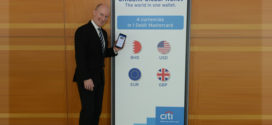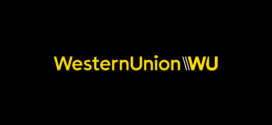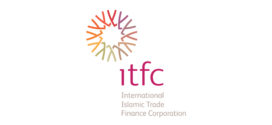 SINGAPORE – Banks are increasingly looking to distribute trade assets to global investors as regulatory reform focusing on leverage and liquidity ratios forces lenders to optimize balance sheet management and strategy. As a result, the core trade distribution function is rapidly gaining importance and reinventing itself in an evolving market, according to a discussion led by Bank of America Merrill Lynch at its Trade Risk Distribution Investor Forum hosted in Singapore on April 25.
SINGAPORE – Banks are increasingly looking to distribute trade assets to global investors as regulatory reform focusing on leverage and liquidity ratios forces lenders to optimize balance sheet management and strategy. As a result, the core trade distribution function is rapidly gaining importance and reinventing itself in an evolving market, according to a discussion led by Bank of America Merrill Lynch at its Trade Risk Distribution Investor Forum hosted in Singapore on April 25.
Bank of America Merrill Lynch’s Trade Risk Distribution Investor Forum was attended by approximately 50 executive delegates representing 30 regional and global banks to discuss and debate the evolving dynamics in trade risk distribution and analyze the innovative new structures and emerging investor segments that will nurture developments in this space.
“Trade financing remains core to a global treasury offering. The evolution of trade risk distribution and the move to more structured program issuance arrangements bestows banks with an advantage to package these assets for liquidity, leverage and balance sheet optimization purposes, while providing additional investment opportunities across the yield curve. It helps us better serve our clients, borrowers and investors, and is consistent with the universal banking model that is increasingly demanded in this region,” said Ivo Distelbrink, head of Global Transaction Services, Asia Pacific.
Trade risk distribution is the distribution or sale and/or participation and/or purchase of funded and unfunded trade exposures to and from third-party investors or agent banks.
According to delegates and presenters, the rising importance of trade risk distribution is driven primarily by the evolving and multi-faceted objectives now required of bank distribution desks. While dependent on regulations and internal policy, most distribution teams are able to achieve risk mitigation, capacity creation and to an extent, improved return on capital. More recently, the focus on return on assets has required increased funded distribution under true sale conditions.
“Risk distribution is today a function that is core to a global trade finance business. On the sell side, trade risk distribution helps organizations create capacity, reduce risk and improve returns on both capital and assets. On the buy side, it provides access to a diversified pool of assets at lower origination and arguably, operational cost. As the function evolves to tap alternative sources of appetite, it will continue to bring more efficiency into the business. This will benefit the end customer and global trade and to that extent, help reduce the effects of increasing costs of capital and liquidity due to changing regulations,” said Rakshith Kundha, head of Structured Trade and Export Financing and Trade Risk Distribution, Asia Pacific, Bank of America Merrill Lynch.
Given recent developments in the industry to tap alternative investors for trade assets, the forum also featured a panel discussion on new avenues of trade risk distribution. Apart from covering various marquee structures in the market by key banks globally, the panel also debated the appropriateness of assimilating a short-term asset class into medium- and long-term structures.
Other key takeaways from the forum include:
- The short-term nature of trade finance creates a pool of assets that are suitable for meeting investor requirements at the shorter end of the yield curve. Investor awareness, standardization of underlying assets, multiple booking locations and lack of appropriate delivery structures are some of the reasons which have prevented widespread access to alternative pockets of investor interest.
- Most structures tapping into the alternative investor market currently tend to fit a short-term asset class into medium-term instruments. This creates a requirement to ensure replenishment of the underlying portfolio with assets which have a similar profile in terms of both risk and return.
- Participants were in agreement on the need for low-cost issuance structures, which not only mitigate or manage this replenishment risk but also provide investors options to exit.
“With an evolving regulatory environment, the shorter end of the yield curve provides a unique opportunity for trade assets, ensuring that trade risk distribution will continue to build on its present momentum,” said Kuresh Sarjan, head of Global Trade and Supply Chain Finance, Asia Pacific.
The half-day agenda featured presentations from executives from Bank of America Merrill Lynch Global Transaction Services, Global Markets and Global Research and a full schedule of one-on-one connection events between the firm and its global client base.
Bank of America Bank of America is one of the world’s largest financial institutions, serving individual consumers, small businesses, middle-market businesses and large corporations with a full range of banking, investing, asset management and other financial and risk management products and services. The company provides unmatched convenience in the United States, serving approximately 49 million consumer and small business relationships with approximately 5,100 retail banking offices and approximately 16,200 ATMs and award-winning online banking with 30 million active users and more than 15 million mobile users. Bank of America is among the world’s leading wealth management companies and is a global leader in corporate and investment banking and trading across a broad range of asset classes, serving corporations, governments, institutions and individuals around the world. Bank of America offers industry-leading support to approximately 3 million small business owners through a suite of innovative, easy-to-use online products and services. The company serves clients through operations in more than 40 countries. Bank of America Corporation stock (NYSE: BAC) is listed on the New York Stock Exchange.
Bank of America Merrill Lynch is the marketing name for the global banking and global markets businesses of Bank of America Corporation. Lending, derivatives, and other commercial banking activities are performed globally by banking affiliates of Bank of America Corporation, including Bank of America, N.A., member FDIC. Securities, strategic advisory, and other investment banking activities are performed globally by investment banking affiliates of Bank of America Corporation (“Investment Banking Affiliates”), including, in the United States, Merrill Lynch, Pierce, Fenner & Smith Incorporated and Merrill Lynch Professional Clearing Corp., all of which are registered broker-dealers and members of FINRA and SIPC, and, in other jurisdictions, by locally registered entities. Merrill Lynch, Pierce, Fenner & Smith Incorporated and Merrill Lynch Professional Clearing Corp. are registered as futures commission merchants with the CFTC and are members of the NFA. Investment products offered by Investment Banking Affiliates: Are Not FDIC Insured * May Lose Value * Are Not Bank Guaranteed. Copyright 2014 Bank of America Corporation. All rights reserved. Bank of America, Merrill Lynch, Broadcort and their logos are trademarks of Bank of America Corporation and/or its affiliates.
Visit the Bank of America newsroom for more Bank of America news.
 Cash And Trade Magazine For Cash and Trade professionals in the Middle East
Cash And Trade Magazine For Cash and Trade professionals in the Middle East




